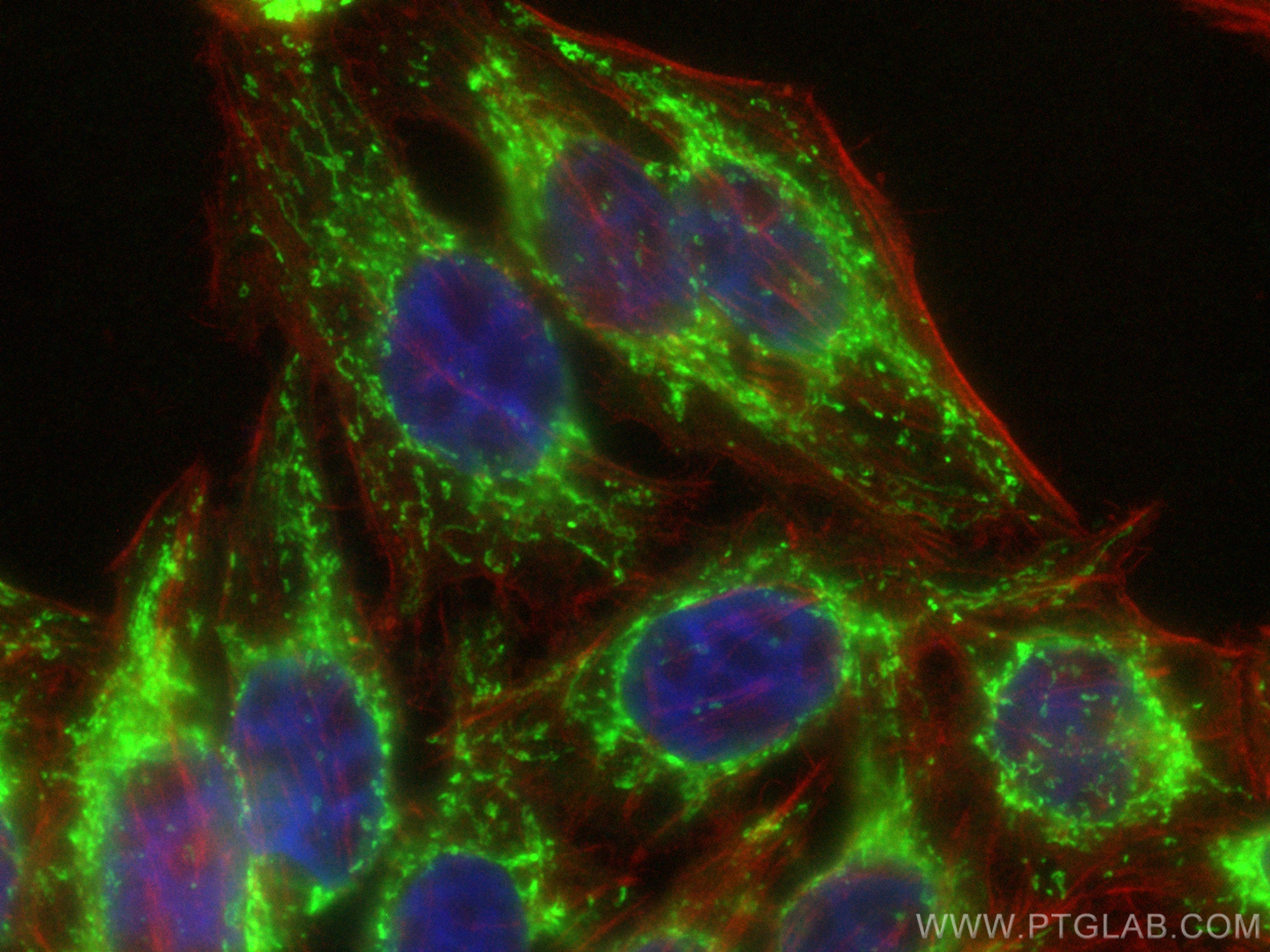验证数据展示
经过测试的应用
| Positive IF/ICC detected in | HepG2 cells |
推荐稀释比
| 应用 | 推荐稀释比 |
|---|---|
| Immunofluorescence (IF)/ICC | IF/ICC : 1:50-1:500 |
| It is recommended that this reagent should be titrated in each testing system to obtain optimal results. | |
| Sample-dependent, Check data in validation data gallery. | |
产品信息
CL488-18703 targets CPS1 in IF/ICC applications and shows reactivity with human, mouse, rat samples.
| 经测试应用 | IF/ICC Application Description |
| 经测试反应性 | human, mouse, rat |
| 免疫原 | Peptide 种属同源性预测 |
| 宿主/亚型 | Rabbit / IgG |
| 抗体类别 | Polyclonal |
| 产品类型 | Antibody |
| 全称 | carbamoyl-phosphate synthetase 1, mitochondrial |
| 别名 | CPS1, CPSase I |
| 计算分子量 | 165 kDa |
| 观测分子量 | 140-165 kDa |
| GenBank蛋白编号 | BC140943 |
| 基因名称 | CPS1 |
| Gene ID (NCBI) | 1373 |
| RRID | AB_3672699 |
| 偶联类型 | CoraLite® Plus 488 Fluorescent Dye |
| 最大激发/发射波长 | 493 nm / 522 nm |
| 形式 | Liquid |
| 纯化方式 | Antigen affinity purification |
| UNIPROT ID | P31327 |
| 储存缓冲液 | PBS with 50% glycerol, 0.05% Proclin300, 0.5% BSA , pH 7.3 |
| 储存条件 | Store at -20°C. Avoid exposure to light. Stable for one year after shipment. Aliquoting is unnecessary for -20oC storage. |
背景介绍
CPS1 is an enzyme that catalyzes the first committed step of the hepatic urea cycle, which is important in the removal of excess urea from cells. Expressed primarily in the liver and small intestine, CPS1 can be used as a marker for mitochondria in these tissues. In addition, CPS1 expression appears to be lost in adenocarcinomas of the small intestine. The antibody can recognize two isoforms of this gene around 165 kDa and 116 kDa.
实验方案
| Product Specific Protocols | |
|---|---|
| IF protocol for CL Plus 488 CPS1 antibody CL488-18703 | Download protocol |
| Standard Protocols | |
|---|---|
| Click here to view our Standard Protocols |
